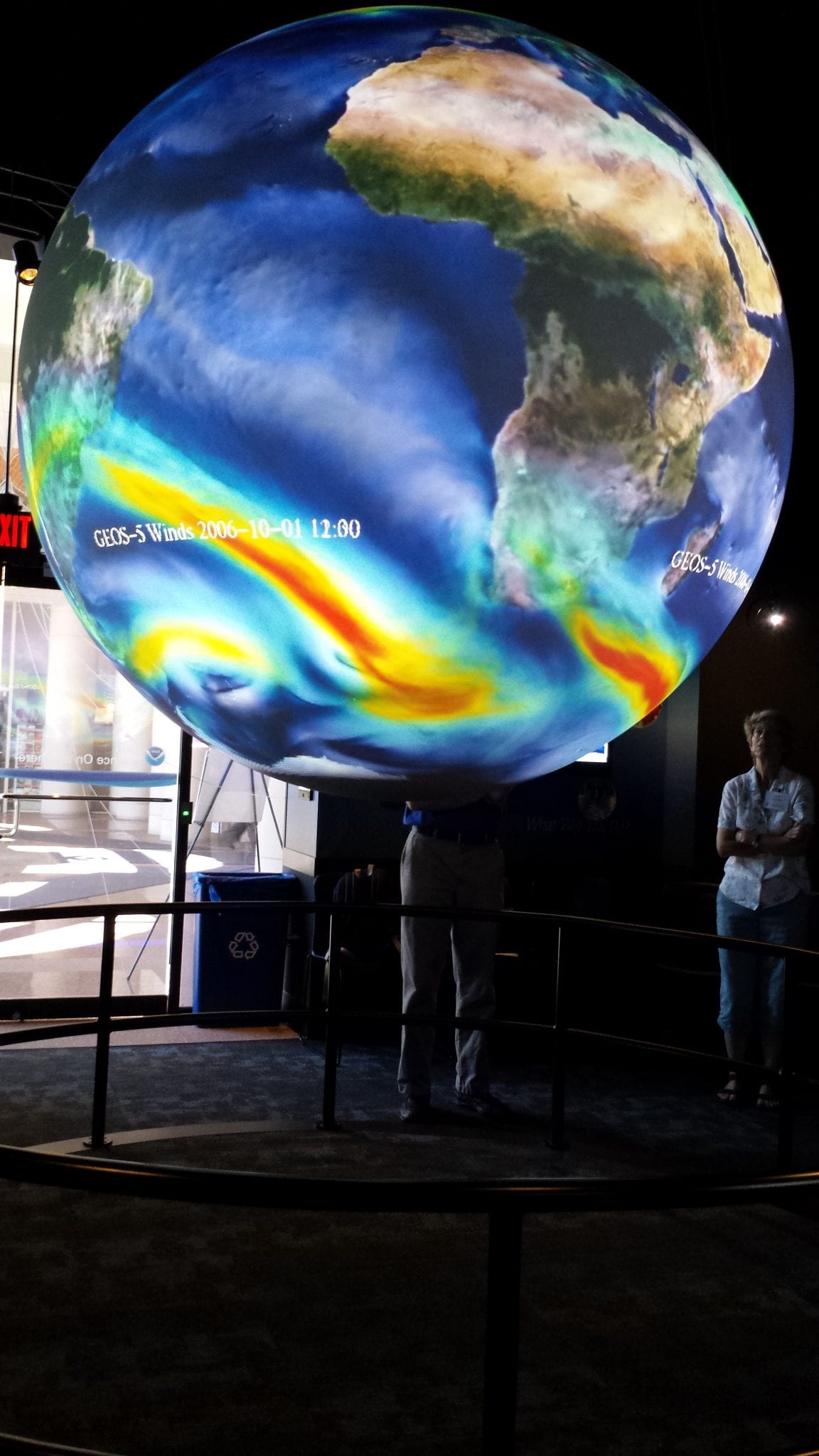The past week, NOAA Climate Stewards in Silver Spring held a climate modeling simulation workshop to introduce all educators to both the technology and potential of climate modeling. We were a full house ranging from public school teachers to nature center directors—but all of us were connected by our common interest in how technology can help us demonstrate and explain climate change to those we teach.
 Linda Sohl kicked off the workshop by presenting how the modeling process works. She walked us through how data is collected, processed, and used to create the models and infographics we see in global reports. One reason there is public distrust of scientific models is a lack of familiarity with modeling and analytical techniques, and the consortium for Climate Risk in the Urban Northeast (CCRUN) works hard to combat this by making data understandable to the public. Next, Randy Russell, the Game and Interactive Multimedia Developer at UCAR Center for Science Education, presented some easy to use and understand activities that were both hands-on and via computer based simulation.
Linda Sohl kicked off the workshop by presenting how the modeling process works. She walked us through how data is collected, processed, and used to create the models and infographics we see in global reports. One reason there is public distrust of scientific models is a lack of familiarity with modeling and analytical techniques, and the consortium for Climate Risk in the Urban Northeast (CCRUN) works hard to combat this by making data understandable to the public. Next, Randy Russell, the Game and Interactive Multimedia Developer at UCAR Center for Science Education, presented some easy to use and understand activities that were both hands-on and via computer based simulation.
In the afternoon, we took part in the World Climate Game, a role-playing activity that is being promoted globally. It uses the same decision support simulation that will be used to give rapid feedback to the delegates at the United Nations Climate Negotiations in Paris. We pretended to be delegates from various parts of the world, and negotiated how to meet the international climate goals. If you’d like to facilitate a similar simulation, take a look at the resources on the World Climate Project page!
Another useful resource introduced to us was Science on a Sphere—a great way to visualize environmental data from NOAA and NASA by projecting images onto a 6-foot sphere! It was amazing to see changes in temperature, wind cycles, or weather patterns over time on a giant globe. If you’d like a first-hand experience, take a look at the NOAA Map to find a location near you, or attend a traveling exhibit.
The simulations and resources tapped into a creative and interactive use of technology while the workshop itself was a way for dedicated educators to learn about these new resources for engaging young people with broad global concepts. Because today’s students will be tomorrow’s decision makers, it is crucial they understand the environmental issues facing the planet and how to use and understand the data behind them. And after participating in the NOAA workshop, I know I for one am better suited for the challenge.


